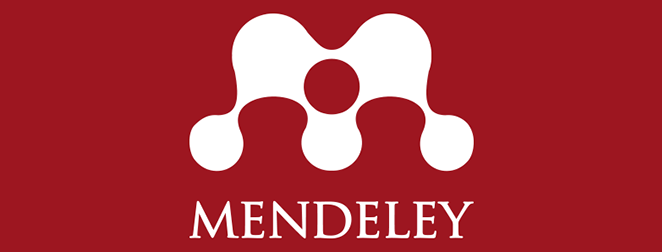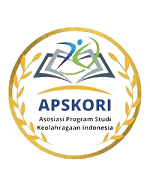Pemetaan Landasan Literasi Fisik: Tinjauan Literatur Sistematis Tentang Definisi, Kerangka Konseptual, dan Alat Ukur (2010-2021)
Abstract
Tinjauan literatur sistematis ini bertujuan memetakan perkembangan konsep literasi fisik periode 2010-2021 melalui analisis definisi, kerangka konseptual, dan alat ukur di berbagai negara. Menggunakan metode PRISMA, penelitian menganalisis 78 artikel dari database Scopus, Web of Science, PubMed, dan ERIC. Hasil mengungkapkan tiga temuan utama: (1) variasi definisi dengan dominasi model holistik Whitehead (53%) dan model berbasis kompetensi Kanada (22%); (2) perbedaan kerangka kerja antarnegara dimana Kanada dan Inggris mendominasi pengembangan instrumen; serta (3) keterbatasan validasi lintas budaya pada 70% alat ukur. Simpulan menunjukkan perlunya konsensus inti yang memungkinkan adaptasi lokal, pengembangan instrumen lebih inklusif, dan penelitian di negara berkembang. Temuan ini memberikan dasar empiris untuk pengembangan kebijakan pendidikan jasmani berbasis literasi fisik yang kontekstual.
Downloads
References
Bulqini, A., Puspodari, P., Arfanda, P. E., Suroto, S., & Mutohir, T. C. (2021). Physical literacy in physical education curriculum. ACTIVE: Journal of Physical Education, Sport, Health and Recreation, 10(2), 55–60.
Caldwell, H. A., Di Cristofaro, N. A., Cairney, J., Bray, S. R., & Timmons, B. W. (2021). Measurement properties of the Physical Literacy Assessment for Youth (PLAY) tools. Applied Physiology, Nutrition, and Metabolism, 46(6), 571–578.
Carl, J., Barratt, J., Wanner, P., Töpfer, C., Cairney, J., & Pfeifer, K. (2022). The effectiveness of physical literacy interventions: a systematic review with meta-analysis. Sports Medicine, 52(12), 2965–2999.
Cornish, K., Fox, G., Fyfe, T., Koopmans, E., Pousette, A., & Pelletier, C. A. (2020). Understanding physical literacy in the context of health: a rapid scoping review. BMC Public Health, 20, 1–19.
Davids, K., Chow, J. Y., & Shuttleworth, R. (2005). A Constraints-based Framework for Nonlinear Pedagogy in Physical Education1. New Zealand Physical Educator, 38(1), 17.
Edwards, L. C., Bryant, A. S., Keegan, R. J., Morgan, K., Cooper, S.-M., & Jones, A. M. (2018). ‘Measuring’physical literacy and related constructs: a systematic review of empirical findings. Sports Medicine, 48, 659–682.
Edwards, L. C., Bryant, A. S., Keegan, R. J., Morgan, K., & Jones, A. M. (2017). Definitions, foundations and associations of physical literacy: a systematic review. Sports Medicine, 47, 113–126.
Flemons, M., Diffey, F., & Cunliffe, D. (2018). The role of PETE in developing and sustaining physical literacy informed practitioners. Journal of Teaching in Physical Education, 37(3), 299–307.
Friskawati, G. F., & Stephani, M. R. (2021). Analysis of Research Trends on Physical Literacy in Indonesia. Jurnal Pendidikan Jasmani Dan Olahraga, 6(2), 255–261.
Giblin, S., Collins, D., & Button, C. (2014). Physical literacy: importance, assessment and future directions. Sports Medicine, 44, 1177–1184.
Gunnell, K. E., Longmuir, P. E., Barnes, J. D., Belanger, K., & Tremblay, M. S. (2018). Refining the Canadian Assessment of Physical Literacy based on theory and factor analyses. BMC Public Health, 18, 1–15.
Hassani, K., Buckler, E. J., McConnell-Nzunga, J., Fakih, S., Scarr, J., Mâsse, L. C., & Naylor, P.-J. (2020). Implementing appetite to play at scale in British Columbia: evaluation of a capacity-building intervention to promote physical activity in the early years. International Journal of Environmental Research and Public Health, 17(4), 1132.
Irmansyah, J., Susanto, E., Lumintuarso, R., Sugiyanto, F., Syarif, A., & Hermansyah, H. (2021). Physical literacy in the culture of physical education in elementary schools: Indonesian perspectives. Int J Hum Mov Sport Sci, 9(5), 929–939.
Jean de Dieu, H., & Zhou, K. (2021). Physical literacy assessment tools: a systematic literature review for why, what, who, and how. International Journal of Environmental Research and Public Health, 18(15), 7954.
Keegan, R., Floow, A., Rattray, B., Niyonsenga, T., Welvaert, M., & Sarkar, M. (2021). Development and initial validation of a self-rated Acute Readiness Monitoring Scale (ARMS). INTERNATIONAL JOURNAL OF SPORT AND EXERCISE PSYCHOLOGY, 19, S76–S76.
Keegan, R. J., Barnett, L. M., Dudley, D. A., Telford, R. D., Lubans, D. R., Bryant, A. S., Roberts, W. M., Morgan, P. J., Schranz, N. K., & Weissensteiner, J. R. (2019). Defining physical literacy for application in Australia: a modified Delphi method. Journal of Teaching in Physical Education, 38(2), 105–118.
Li, M. H., Sum, R. K. W., Tremblay, M., Sit, C. H. P., Ha, A. S. C., & Wong, S. H. S. (2020). Cross-validation of the Canadian Assessment of Physical Literacy second edition (CAPL-2): The case of a Chinese population. Journal of Sports Sciences, 38(24), 2850–2857.
Longmuir, P. E., Gunnell, K. E., Barnes, J. D., Belanger, K., Leduc, G., Woodruff, S. J., & Tremblay, M. S. (2018). Canadian Assessment of Physical Literacy Second Edition: a streamlined assessment of the capacity for physical activity among children 8 to 12 years of age. BMC Public Health, 18, 1–12.
Lundvall, S. (2015). Physical literacy in the field of physical education–A challenge and a possibility. Journal of Sport and Health Science, 4(2), 113–118.
Marttinen, R. H. J., McLoughlin, G., Fredrick III, R., & Novak, D. (2017). Integration and physical education: A review of research. Quest, 69(1), 37–49.
Mashud, S. H., & Abdillah, S. (2021). Physical Literacy: Kajian Sarpras Pendukung Pembelajaran Pjok Dan Ektrakurikuler Olahraga Di Sekolah Daerah Lahan Basah. Prosiding Seminar Nasional Lingkungan Lahan Basah, 6(2).
Shearer, C., Goss, H. R., Boddy, L. M., Knowles, Z. R., Durden-Myers, E. J., & Foweather, L. (2021). Assessments related to the physical, affective and cognitive domains of physical literacy amongst children aged 7–11.9 years: a systematic review. Sports Medicine-Open, 7(1), 37.
Snyder, S. (2013). The simple, the complicated, and the complex: Educational reform through the lens of complexity theory.
Starck, J. R., Richards, K. A. R., & O’Neil, K. (2018). A conceptual framework for assessment literacy: Opportunities for physical education teacher education. Quest, 70(4), 519–535.
Tremblay, M., & Llyod, M. (2010). Physical literacy measurement the missing piece. Physical & Health Education Journal, 76(1), 26.
Tremblay, M. S., & Longmuir, P. E. (2017). Conceptual critique of Canada’s physical literacy assessment instruments also misses the mark. Measurement in Physical Education and Exercise Science, 21(3), 174–176.
Tremblay, M. S., Longmuir, P. E., Barnes, J. D., Belanger, K., Anderson, K. D., Bruner, B., Copeland, J. L., Delisle Nyström, C., Gregg, M. J., & Hall, N. (2018). Physical literacy levels of Canadian children aged 8–12 years: Descriptive and normative results from the RBC Learn to Play–CAPL project. BMC Public Health, 18, 1–14.
Whitehead, M. (2010). Physical literacy: Throughout the lifecourse. Routledge.
Wohlers, B. R. (2019). Teachers’ Beliefs about Implementing a Physical Literacy Program for Children & Youth.
Yang, E., & Sanborn, B. (2021). Ecological systems theory. In A handbook of theories on designing alignment between people and the office environment (pp. 101–114). Routledge.
Copyright (c) 2021 Nur Ihsan HL

This work is licensed under a Creative Commons Attribution-ShareAlike 4.0 International License.
Authors who publish with this journal agree to the following terms:
- Copyright on any article is retained by the author(s).
- The author grants the journal, the right of first publication with the work simultaneously licensed under a Creative Commons Attribution License that allows others to share the work with an acknowledgment of the work’s authorship and initial publication in this journal.
- Authors are able to enter into separate, additional contractual arrangements for the non-exclusive distribution of the journal’s published version of the work (e.g., post it to an institutional repository or publish it in a book), with an acknowledgment of its initial publication in this journal.
- Authors are permitted and encouraged to post their work online (e.g., in institutional repositories or on their website) prior to and during the submission process, as it can lead to productive exchanges, as well as earlier and greater citation of published work.
- The article and any associated published material is distributed under the Creative Commons Attribution-ShareAlike 4.0 International License








1.png)







